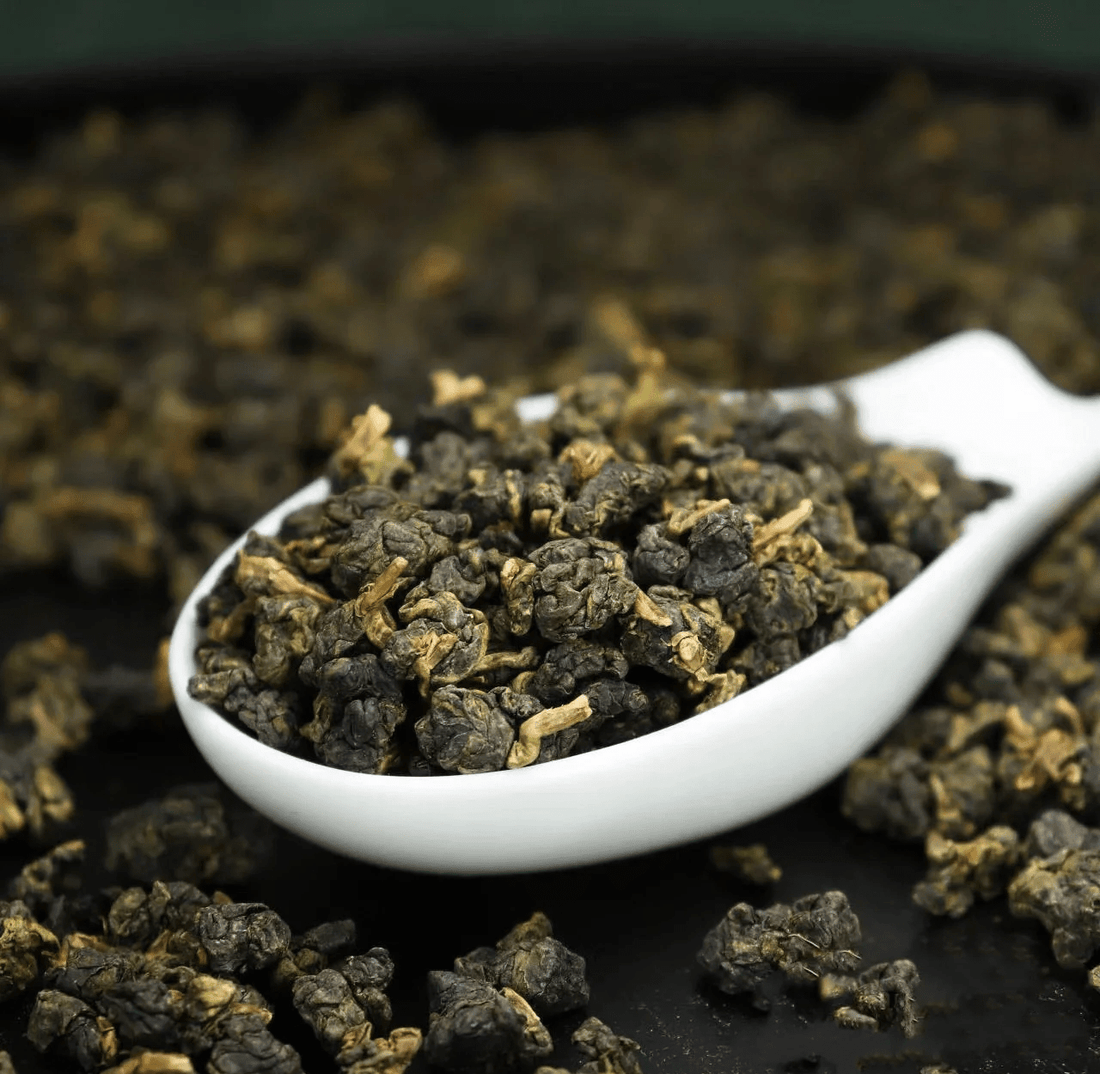
Taiwan Dongding Oolong Tea: A High-Altitude Gem of Elegance
Key Takeaways
- Taiwan Dongding Oolong Tea, hailed as "the pinnacle of Taiwanese teas," originates from Dongding Mountain (700–1000m altitude) in Taiwan, with roots tracing back to Wuyi Oolong saplings introduced in 1855.
- Its signature traits: tightly rolled, semi-spherical dark green leaves with golden edges; golden-amber liquor; mellow, layered taste; and fresh, long-lasting orchid and fruit aromas—all naturally derived.
- Grown in high-altitude terroir (cool mist, fertile soil), it develops unique complexity, balancing richness with elegance.
- Brewing requires 95°C+ water to unlock its aromas, with high-quality batches re-steeping beautifully 6–8 times.
Taiwan Dongding Oolong Tea: A High-Altitude Gem of Elegance
In the pantheon of Taiwanese teas, Dongding Oolong shines as a symbol of craftsmanship and terroir. Grown on the misty slopes of Dongding Mountain, this oolong has captivated tea lovers for over a century with its balanced flavor, delicate aromas, and rich history. Let’s explore why it’s celebrated as "Taiwan’s tea par excellence."
1. Origins: A Journey from Wuyi to Dongding
Dongding Oolong’s story begins in 1855, during the Qing Dynasty. Lin Fengchi, a villager from Taiwan’s Lugu Township, traveled to Fujian for imperial examinations. Upon his return, he brought back 36 precious Wuyi Oolong saplings—plants that would take root in Dongding Mountain’s fertile soil.
These saplings thrived in Dongding’s unique environment: high altitude (700–1000m), cool temperatures, and frequent mist. Over generations, they evolved into a distinct variety, adapting to the mountain’s terroir to develop flavors unlike their Fujian ancestors. Today, Dongding Oolong stands as a testament to cross-cultural exchange and nature’s adaptability.
2. Terroir: Why Dongding Mountain Matters
What makes Dongding Oolong special? Its high-altitude home. Dongding Mountain’s elevation brings cool, misty air that slows leaf growth, allowing nutrients and aromatic compounds to concentrate. The soil, rich in minerals from ancient rock, infuses the leaves with subtle depth, while ample rainfall (balanced by mountain drainage) keeps the plants vibrant without waterlogging.
This terroir creates a tea that’s both robust and refined—never harsh, always layered.
3. What to Expect: Appearance & Flavor
Dongding Oolong is a feast for the senses, from dry leaf to last sip:
- Dry Leaves: Tightly rolled into semi-spherical, slightly curved shapes—like tiny green pearls. Their color is deep, glossy dark green, with edges hinting at golden yellow (a sign of careful processing).
- Aroma: Dry leaves exude fresh orchid notes with a hint of ripe stone fruit (think peach or apricot). Once brewed, the scent blooms into a bright, elegant fragrance—clean, uplifting, and surprisingly long-lasting, lingering in the cup even after the tea is drunk.
- Liquor: Golden with amber undertones, clear and luminous, like liquid sunlight through mist.
- Taste: Sips start with a mellow richness, coating the palate smoothly. Then comes a subtle sweetness, followed by layers of floral (orchid) and fruity notes, finishing with a clean, refreshing minerality. It’s balanced—never bitter, with just enough body to satisfy, yet light enough to enjoy all day.
4. Craftsmanship: How It’s Made
While Dongding Oolong’s terroir lays the foundation, skilled processing elevates its potential. Key steps include:
- Plucking: Young, tender leaves are picked in spring and autumn (peak seasons) when aroma compounds are most abundant.
- Withering: Leaves are spread to lose moisture gently, softening them for rolling.
- Shaking: A signature oolong step—leaves are gently agitated to trigger controlled oxidation, developing their floral/fruity aromas.
- Pan-Frying: Quick heat stops oxidation, locking in freshness and preventing grassiness.
- Rolling: Leaves are rolled into tight balls to release essential oils, concentrating their flavor.
- Drying/Baking: Light baking removes excess moisture, enhancing sweetness and ensuring shelf stability without overpowering the natural aromas.
5. Brewing Dongding Oolong: Unlock Its Beauty
To savor Dongding Oolong at its best, follow these steps:
- Teaware: Use a gaiwan (covered bowl) or small porcelain teapot—porcelain preserves its delicate aromas better than clay.
- Warm the Vessel: Rinse with hot water to heat it, then add 7–8g of dry leaves (for 150ml water). Gently shake to awaken the leaves.
- Water Temperature: 95–100°C (boiling water) to fully extract its aromas and flavors—cooler water would dull its brightness.
- Steeping Time:
- First 2 infusions: 5-10 seconds (quick pour-in/out to avoid bitterness).
- Subsequent infusions: Add to 15-20 seconds gradually. High-quality Dongding Oolong re-steeps 6–8 times, with later brews revealing softer, sweeter notes.
- Pro Tip: Sip slowly from small cups to appreciate how the aroma shifts from floral to fruity as the tea cools.
6. Why It’s Loved (Especially by Tea Enthusiasts)
Dongding Oolong’s appeal lies in its versatility. It’s rich enough to pair with light pastries (like almond cookies) yet clean enough to enjoy solo. Its elegant flavors make it a favorite among those new to oolong, while its complexity satisfies connoisseurs.
Notably, it’s adored by many female tea lovers for its refreshing, non-astringent profile—perfect for afternoon sipping or as a calming end to a busy day.
Taiwan Dongding Oolong isn’t just tea—it’s a taste of Dongding Mountain’s mist, soil, and history. With every cup, you sip a legacy of craftsmanship and nature’s grace.
